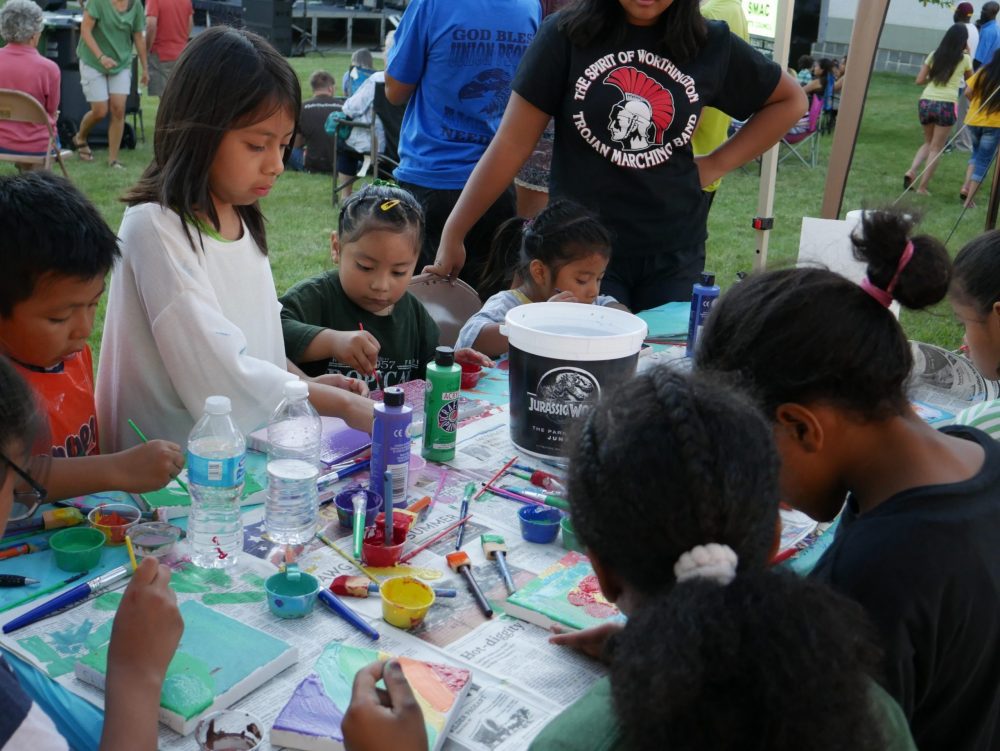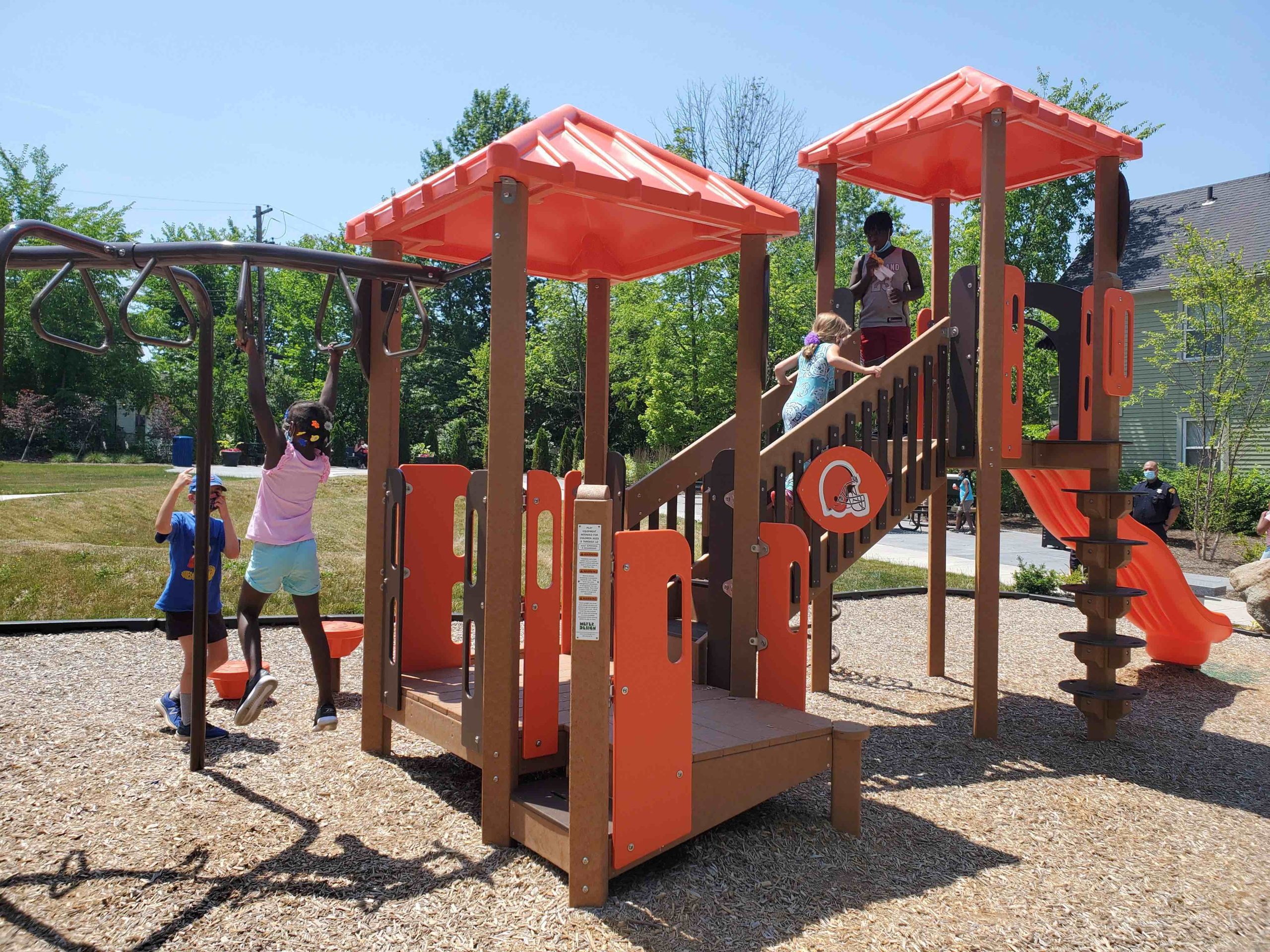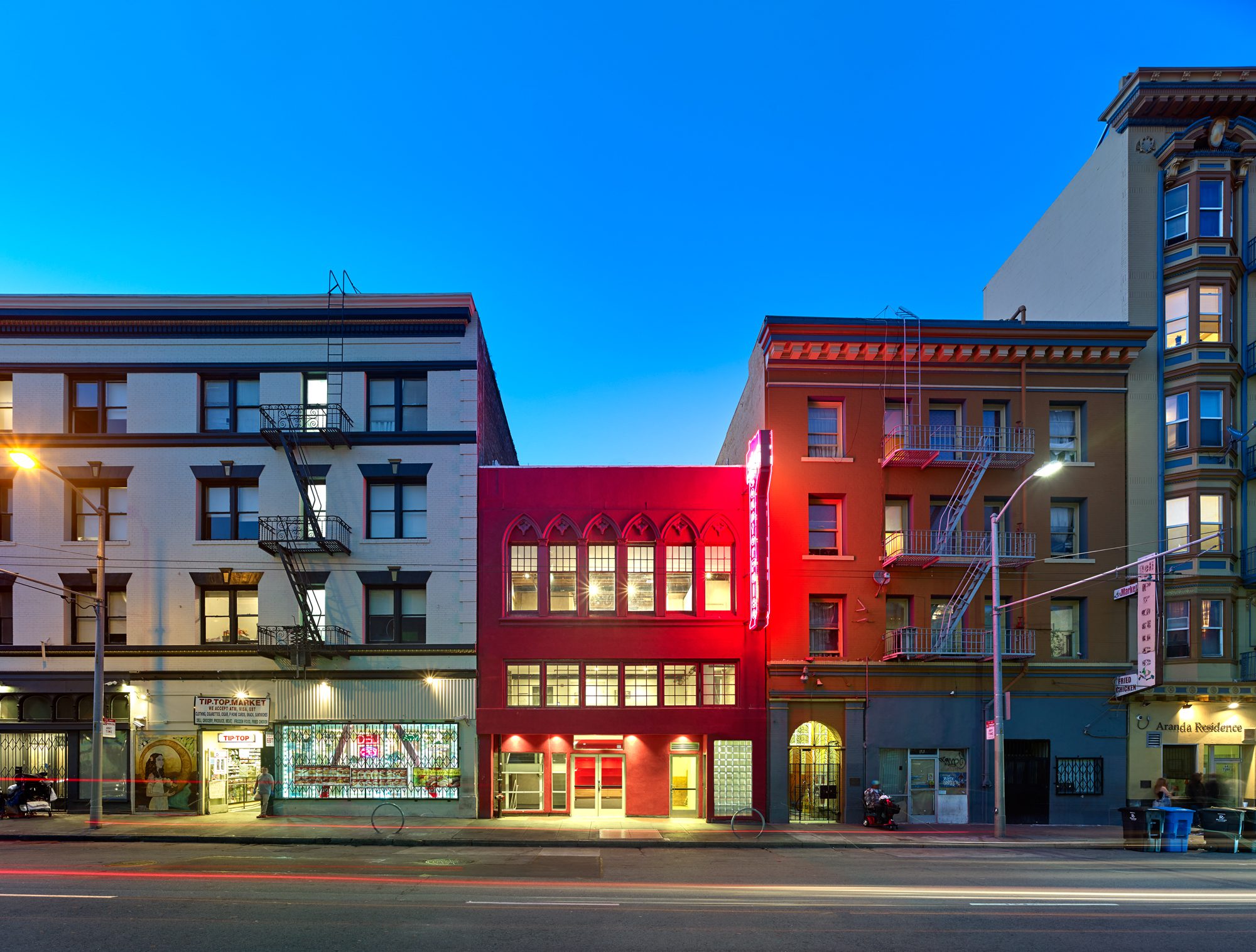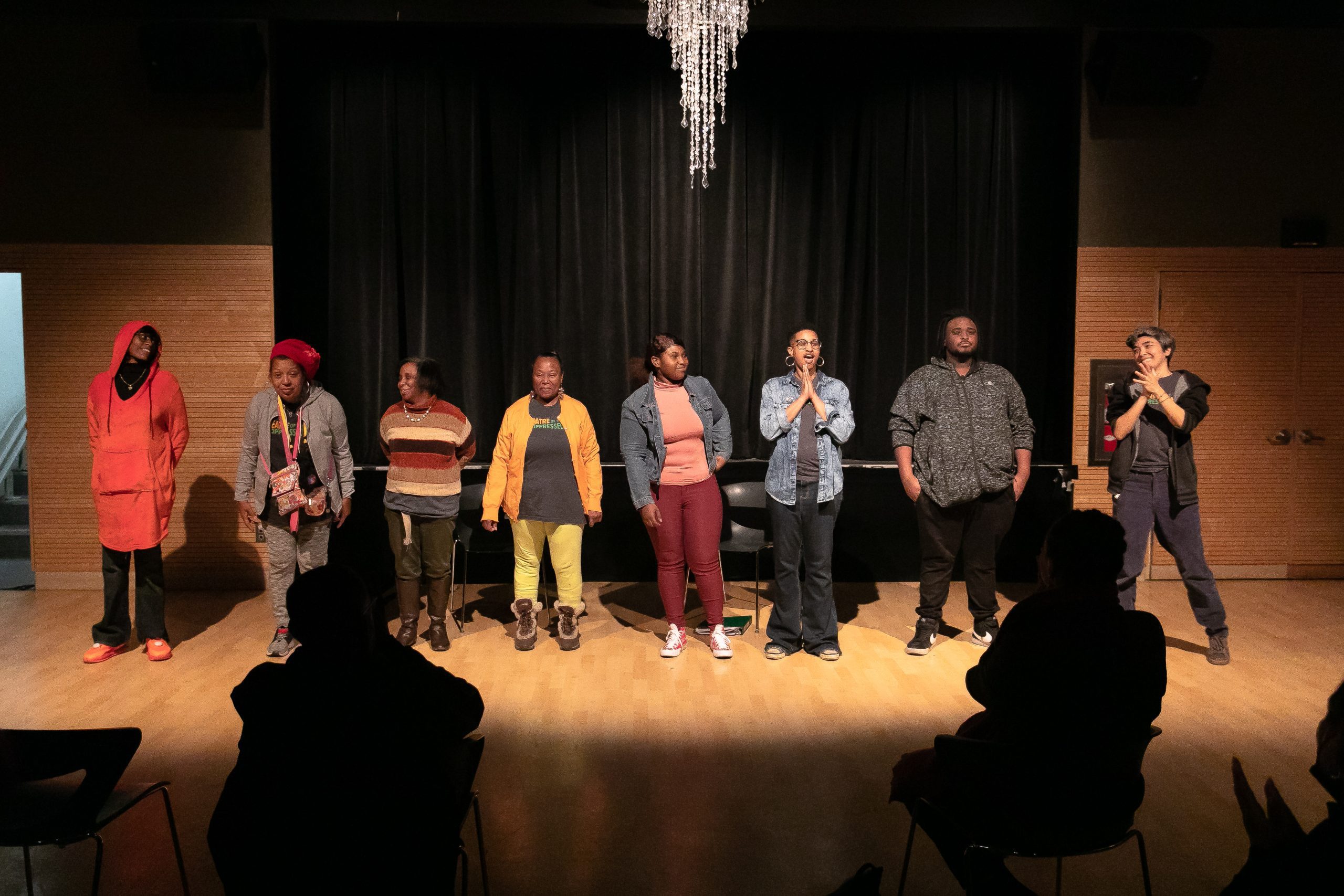Vickie Benson at the McKnight Foundation has heard it all: that the arts are elitist, a luxurious indulgence available to only a privileged few, or even a nice treat but never important enough to be the main course. These misconceptions have, at times, seemed to her to overshadow the work that artists do and the potential of that work to bring people together and support the growth of healthy communities.
And that potential is big. “Minnesota has a rich and vibrant artistic eco-system,” says Benson, “and at McKnight, we believe it wouldn’t be as rich if we didn’t have skilled people working on their craft, whatever their artistic expression. When those individuals . . . [are] supported, then not only does the art form benefit, but people around them benefit, communities benefit.”
But something’s starting to shift, and Benson can barely contain her excitement. More and more, it seems that arts and culture are being perceived as essential to the core fabric of what builds and nourishes communities—and that gives Benson enormous hope. ArtPlace America, a decade-old collaboration of foundations, federal agencies, and financial institutions, has been one of the driving forces for that shift, Benson says, by insisting that the arts must be in conversation with other sectors, whether community development, housing, or health.
In Minnesota, the Southwest Minnesota Housing Partnership (SWMHP) has joined that conversation. With the support of a community development investment grant from ArtPlace America, which will provide $3 million in funding over three years, SWMHP is exploring ways of building arts and culture into its operations. It’s a bold step for the organization, and one that Benson wholeheartedly applauds. “Music, dance, or visual art are forms of expression within many cultures. And just the weaving together of these many, many varied cultural traditions is a natural path for people to communicate with each other,” says Benson. “That is what I hope to see, that communities will understand the importance of arts and culture not as an add-on but as a core piece of community development.”
Focus on Southwest Minnesota
Founded in 1992, SWMHP emerged on the heels of the farm crisis of the 1980s. Reeling from economic devastation and steady population losses, communities in southwest Minnesota sought opportunities to diversify, looking to meat processing, light industrial manufacturing, and health care to take the place of agriculture. Companies like Mayo Clinic, Allina Health System, and Fairview Health Services set up shop in Minnesota and today rank among the state’s overall top 10 employers. In Worthington, a JBS pork processing facility is the city’s biggest industry, employing more than 15 percent of the local population. Westin Automotive set up a branch in St. James in 1992, and, with Doda USA and Smithfield Foods, remains among the small town’s top employers.
With economic diversification and new industry came an influx of new residents looking for work. The loss of population that had characterized the last three decades of the previous century slowly reversed: in Nobles County, Minnesota, the population, which had dropped from 23,208 in 1970 to 20,098 in 1990, began to climb again, reaching 21,383 by 2010, largely as a result of immigration. “Thirty years ago, many feared the southwest Minnesota town [Worthington] would become a ghost town,” reported the Twin Cities Pioneer Press in September 2011. “Instead immigrants flooded in—and stayed.” Between 2000 and 2010, the population of Worthington grew from 11,280 to 12,764. Over a third identify as Latino.
“Southwest Minnesota is becoming the home place of strangers,” wrote professor Joseph A. Amato, dean of regional and rural studies at Southwest State University, in 1999. “Setting the stage is a decline of population caused by death, an aging population, and emigration, especially the loss of the region’s youth. Newcomers employed by the meat industry are also part of a true metamorphosis of the region and its way of life.”
The increase in population—plus a decade of natural disasters that placed Minnesota among the top 10 states in the U.S. to experience catastrophic losses between 1990 and 1999—created more demand than the current housing infrastructure could meet. SWMHP formed in response to the growing demand, laying the groundwork for partnerships throughout the southwest to support local community and economic development. “Our mission is to create thriving places to live, grow, and work in partnership with communities,” said Rick Goodemann at an October 2016 community forum celebrating SWMHP’s selection for the CDI grant initiative. SWMHP now serves 30 counties in rural Minnesota, operating over 1,600 rental units, educating new homebuyers, developing new single-family dwellings, and preserving owner-occupied homes.
“Many communities in our region are changing and becoming more diverse,” says Lisa Graphenteen, chief operating officer at SWMHP. “As the region came out of the farming crisis, we started to see a lot of our agricultural industries start to grow with a shortage of local labor.”
These changes spurred interest in trying out a new approach to community and economic development, one that SWMHP had been largely unaware of until now. While much of Minnesota used to be defined by farming and dominated by people of Scandinavian heritage, industry has expanded and the state is now home to immigrants from around the world. These shifts have led to what local business owner Mike Woll called an “identity crisis” in many communities. The hope is that by integrating arts and culture into their work, SWMHP can help communities establish a new sense of identity and place while increasing economic opportunity and encouraging growth.
With the CDI grant, SWMHP first had to figure out how to get the most out of this new resource. Given the geographical scope of the area the organization serves, there was the immediate risk of spreading itself too thin. “We’re a rural, regional organization serving 30 counties,” says Graphenteen. “Focusing our efforts in a few communities was critical.”
Enlisting the help of Metris Consulting, SWMHP spent six months working on regional asset mapping to evaluate locations for participation in the CDI program. They were keen to identify communities where the goals of integrating arts and culture extended beyond one-off beautification projects. The aim was for the arts to play a role in helping communities thrive over the long term. “Some communities had clear ideas, and others really struggled,” Graphenteen recalls. The right candidates had to be ready to think big, to put the arts to work in strengthening all aspects of the community and celebrating diversity.
St. James and Worthington fit the bill.
Defining Success: St. James
Joe McCabe, city manager of St. James, held his breath when one of the local high school teachers told him she was worried. “We’re not promoting the artists in our school system throughout the community the way we should,” the teacher said. The art class was about 90 percent Latino and the paintings and sketches they were producing were “phenomenal—not just fantastic, but phenomenal. How can we share that with the community?”
Later that same day, McCabe got a call. His city was invited to participate in the CDI program.
“We held a community connection festival to get some input from the community,” recalls McCabe. “We held it in the lunchroom at the high school because it was air conditioned.” Eighty St. James residents, white and Latino, turned up for the event. They were asked what they loved about their home, what amenities they liked best, and what programs and businesses they wanted to see. Respondents mentioned what McCabe describes as “typical things for a small town”: a clothing store; a shoe shop; more restaurants; and better transportation solutions, services that can have a huge impact on rural life. Some simply said they would like to get to know their neighbors better. St. James still suffers from what Minnesota journalist Dave Peters refers to as “parallel play”: Latino and white residents “existing side by side but often not forming significant bridges or connections.” This disconnect was another issue respondents flagged—one that art, McCabe thinks, could help bridge. “If there’s a mural up in our downtown area, people are going to be commenting and talking about it,” McCabe says. “It’s another way to have people come into the community and talk about something besides the weather and the price of corn.”
St. James already has a track record in effectively leveraging the arts with regard to education. In the 2014-2015 school year, Northside Elementary School participated in Turnaround Arts, a federal program that brings arts education to underfunded schools in high-poverty areas. The program provides resources to participating schools, including funding, materials, and teaching artists, to expose students to the arts and train teachers in using artistic practice to improve literacy and foster greater student engagement. “That was one of the things that got us excited about St. James,” says Graphenteen. “Turnaround Arts was about making that change, improving scores.”
But there’s still some distance to go in convincing the local community that the arts is a worthwhile investment. In November 2015, a referendum approving $24 million for improvements to the school district finally passed after six failed attempts dating back to 2001. Graphenteen can’t help but wonder whether dropping a few items from the construction plans—namely a 500-seat auditorium and new band and choir rooms—helped win over voters. “The committee did substantial community outreach to develop a plan that the community would support; unfortunately, we see all too often that art and cultural improvements lose out” to things like athletics, Graphenteen says.
But Graphenteen is far from discouraged. Taking up the challenge of the CDI initiative, she hopes, will reassure the community of what the arts can do.
“A big part of this work is measuring the opportunities it provides for social change, which will vary in each community,” says Graphenteen. “The art and cultural strategies we undertake may look to reduce achievement gaps in communities of color and create healthier families. It can increase downtown revenue spent in that community instead of a metro center an hour away. How are we going to measure that change? How are we defining success for ourselves and our communities?”
Ahead of the Curve: Worthington
On 2nd Street in Worthington, the wall of the VFW building is an explosion of color. Painted on the side of the building is a woman dancing, the folds of her bright orange dress billowing around her. Beside her is a man in a blue hardhat blowing a trumpet, his wide cheeks reminiscent of Dizzy Gillespie. Behind the pair is a scene of a lake with three windsurfers riding the waves. In the background are trees, windmills, an American flag.
The mural was one of the local sites that Worthington Mayor Mike Kuhle was proud to show when ArtPlace came for a tour of the town in spring 2016. “The mural on the side of VFW shows our heritage,” Kuhle said at the community forum later that fall. “That wasn’t an easy project, going through the public arts commission, but we persevered and we pushed.”
Kuhle uses those phrases a lot in his community forum speech: we persevered, we pushed, we did it. A couple of decades ago, Worthington’s future looked bleak. The farm crisis had taken its toll; the town’s population dropped from 10,243 in 1980 to 9,980 in 1990 as people left the area in search of better opportunities.
The expansion of the meat processing industry in Worthington turned this trend around. JBS Swift and Co., a subsidiary of ConAgra Foods Inc., established what would become its principal plant in Worthington. The impact was far-reaching in the area, propping up small businesses like Smith Trucking Inc. and local hog producers. In 1989, increases in productivity led to an additional shift at the plant, attracting workers from literally around the world. “Swift & Company (which until 1995 was Monfort, a subsidiary of ConAgra Inc.), alone accounts for Worthington’s rich diversity and great turbulence,” wrote Amato in his 1999 report New Peoples and New Orders: The Metamorphosis of Contemporary Rural Minnesota. “In five years, it more than doubled its work force, growing from approximately 750 to 1,500 workers.” The so-called foreign-born population of Worthington jumped in parallel from 3.7 percent of the total population in 1990 to more than 15 percent in 2000.
Mike Woll remembers when that shift took place. “Worthington’s history of immigration dates back to when I was in high school, when we had some early Lao immigrants,” Woll recalls. “The community became incredibly diverse.” Walk into Woll’s high school today and some 50 dialects can be heard, from Central American to Southeast Asian to East African. Downtown on 10th Street, Woll says, “you’ll see people from all over the world. Myanmar, Ethiopia, Laos, all sorts of Latin American influence. It’s a remarkable place.”
The fast pace of growth in this dynamic community over the years, and the value the community has already placed on the arts, drew SWMHP to Worthington. The VPW mural is only the beginning: The Worthington Public Arts Commission (WPAC) formed in November 2012. More than simply beautifying public areas, WPAC aims to include the arts in “city planning, services, design, and infrastructure.” For SWMHP, WPAC was an indicator that Worthington was ready to push the boundaries of what art can achieve. “Worthington is a fast-growing community,” says Graphenteen, “so the conversation focuses around people being able to thrive in the community through basic needs like housing and transportation.” What can art do to improve housing, transportation, and child care? What can it do to improve access to amenities like Lake Okabena, depicted in the VPW mural?
The answers to those questions are still forthcoming (Shelterforce will be checking in with CDI grantees next year to see how their projects are going). An event similar to the community connection festival St. James held is one idea on the table. SWMHP is also building connections with established Minnesota-based organizations with track records in building community through the arts, like multicultural and multidisciplinary arts center Intermedia Arts and artist-led Springboard for the Arts.
In the meantime, Woll hopes that one outcome of Worthington’s participation in the CDI Initiative will be preservation of one of the community’s strongest assets. “Diversity brings challenges, but it’s put Worthington ahead of the curve. It gives us a broader scope of the world,” Woll says. He is proud to know that his college-aged son, who grew up in Worthington, can take living in a multicultural environment for granted, even more so than his peers from places like Minneapolis and Chicago. But making space for multiculturalism to truly thrive means giving voice to communities that often haven’t had a seat at the table. Woll hopes that the CDI Initiative will help expand leadership roles to segments of the population who have so much to say, but haven’t had the platform to say it. “If not for a program like [ArtPlace], those cultures do get lost,” Woll says. “Having a bit of institutional strength and a financial boost from Artplace can help take what are challenges and turn them into positives.”
The Southwest Minnesota Housing Partnership is one of six organizations selected to receive multiyear grants from ArtPlace America through the Community Development Investments (CDI) program. The program was geared to organizations that have not previously used arts and culture strategies in their community development work to help them integrate new tools and approaches and build new partnerships.
Want to learn about the other organizations that were selected for the CDI program? We’ve profiled two other grantees—the Cook Inlet Housing Authority in Anchorage, Alaska, and the Little Tokyo Service Center in Los Angeles, California.






Comments